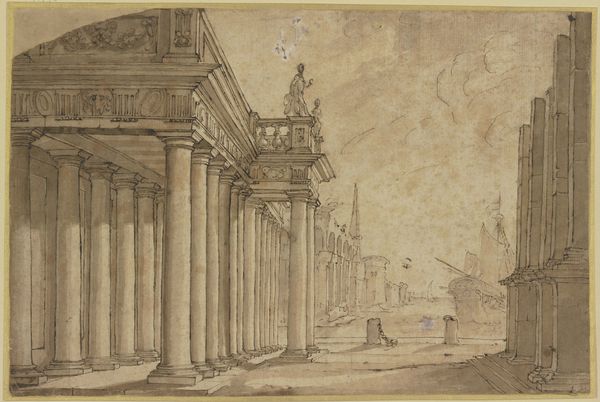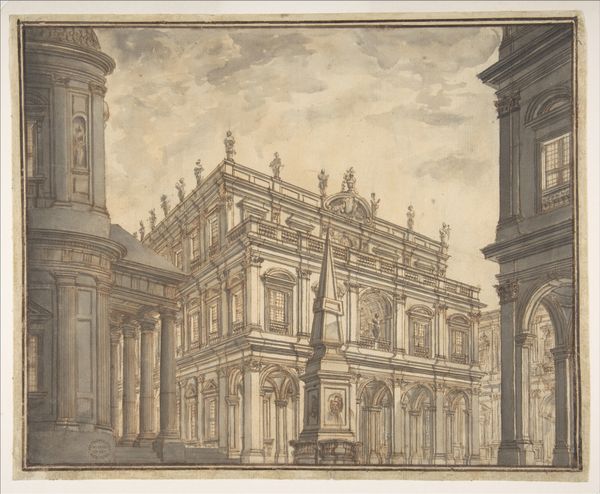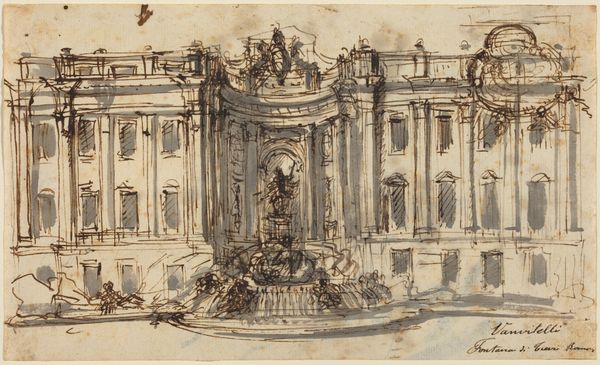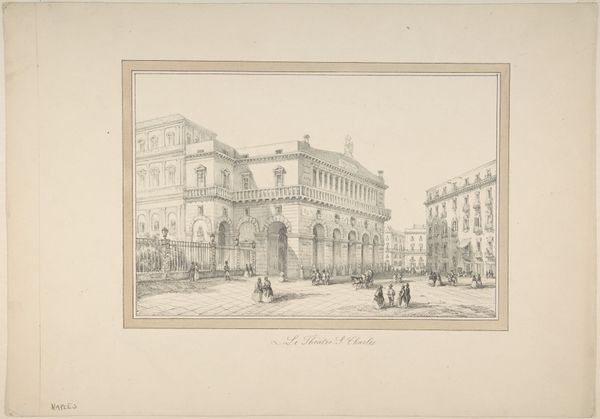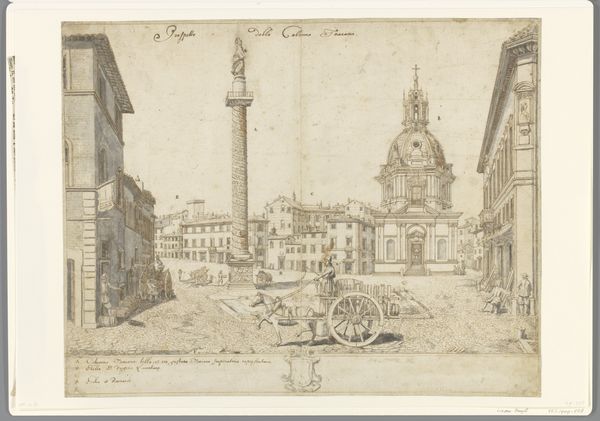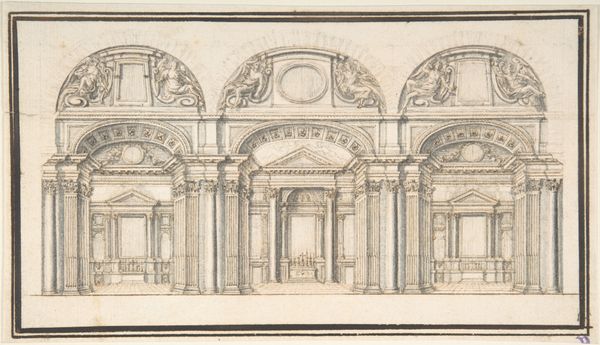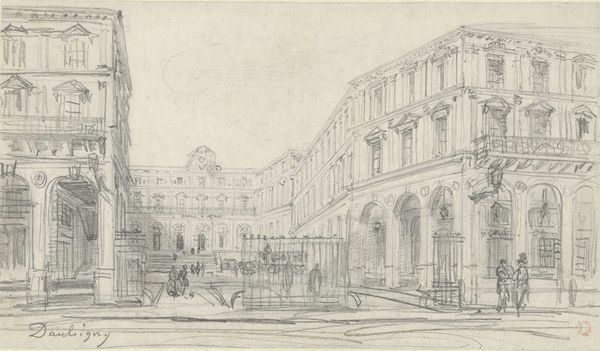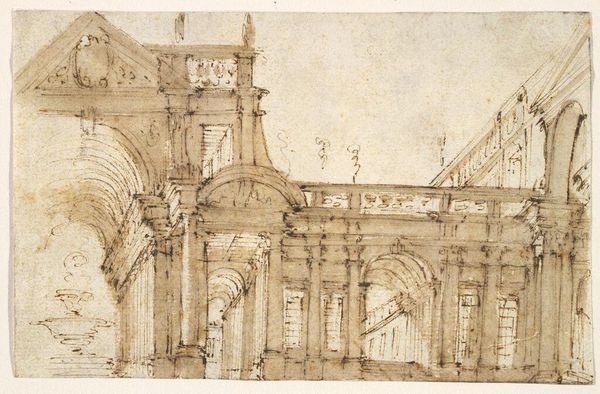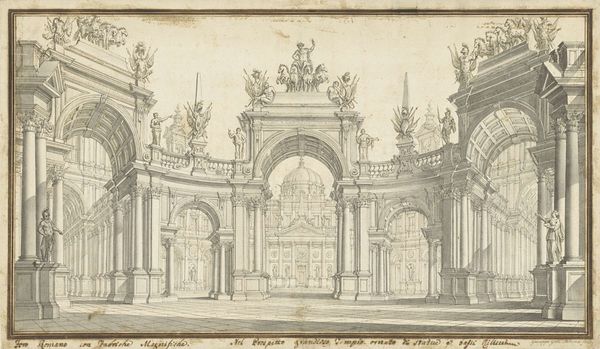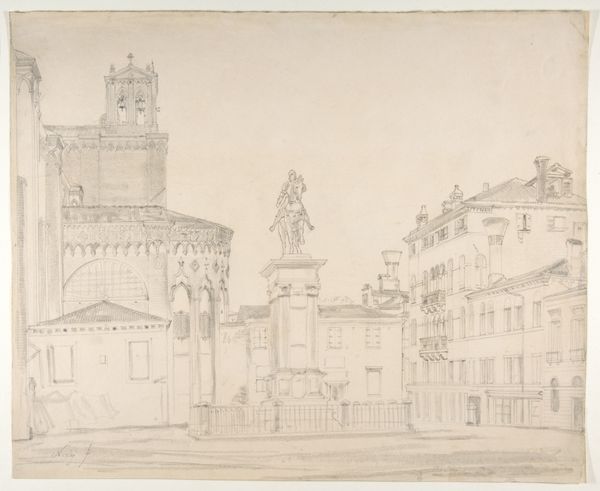
Stage Design: A Piazza with a Domed Church and an Obelisk 1783
0:00
0:00
drawing, pencil, architecture
#
architectural sketch
#
drawing
#
neoclacissism
#
etching
#
perspective
#
pencil
#
cityscape
#
history-painting
#
architecture
Dimensions: overall: 20.4 x 22.9 cm (8 1/16 x 9 in.)
Copyright: National Gallery of Art: CC0 1.0
Curator: This architectural sketch, "Stage Design: A Piazza with a Domed Church and an Obelisk," was crafted in 1783 by Giuseppino Galliari, a master of perspective and theatrical design. Editor: There's an odd tension here. It feels both grand and somehow incomplete, like a half-remembered dream of a monumental space. Curator: Dreams built from precise labor! Consider how Galliari uses pencil and etching to construct not just buildings, but a sense of place—a theatrical illusion meant to wow an audience. I imagine stagehands, painstakingly bringing this to life with paint and wood. Editor: Precisely! This drawing becomes a document of that unseen labor, not just Galliari’s own hand. Think of the forests felled, the pencils sharpened, the etcher’s acid biting into metal to replicate and disseminate this vision of urban grandeur. Curator: I feel the theatricality even in the emptiness. It begs for performers, stories—it’s more than just architecture. The ink itself seems to shimmer like a stage set under candlelight. Doesn't this suggest the dawn of Neoclassicism, recalling ancient virtues with modern spectacle? Editor: Virtues carefully consumed and replicated, right? Those precise lines are about producing and consuming an ideal, where even something ancient feels... brand new, commodified. What sort of labor, from Galliari down, sustains this urban spectacle? Curator: I get caught up thinking about Galliari as a person, the emotional connection he must have had to these envisioned spaces. It reflects hope and maybe ambition, too. The drawing provides, in that sense, a kind of access. Editor: But access through a very particular lens—wealth and privilege being assumed, not challenged. Looking at the materials emphasizes a world in which labor reproduces that vision, a cycle of production and consumption creating stages for elites. Curator: Thinking about Galliari now, and the materiality of performance, reveals new appreciation in how theatre both builds worlds, yet stays bound by material constraint. Editor: Yes, both creator and process are subtly revealed. From the grain of the pencil to that imagined obelisk—it allows us to reconsider labor and capital within a staged historical moment.
Comments
No comments
Be the first to comment and join the conversation on the ultimate creative platform.

